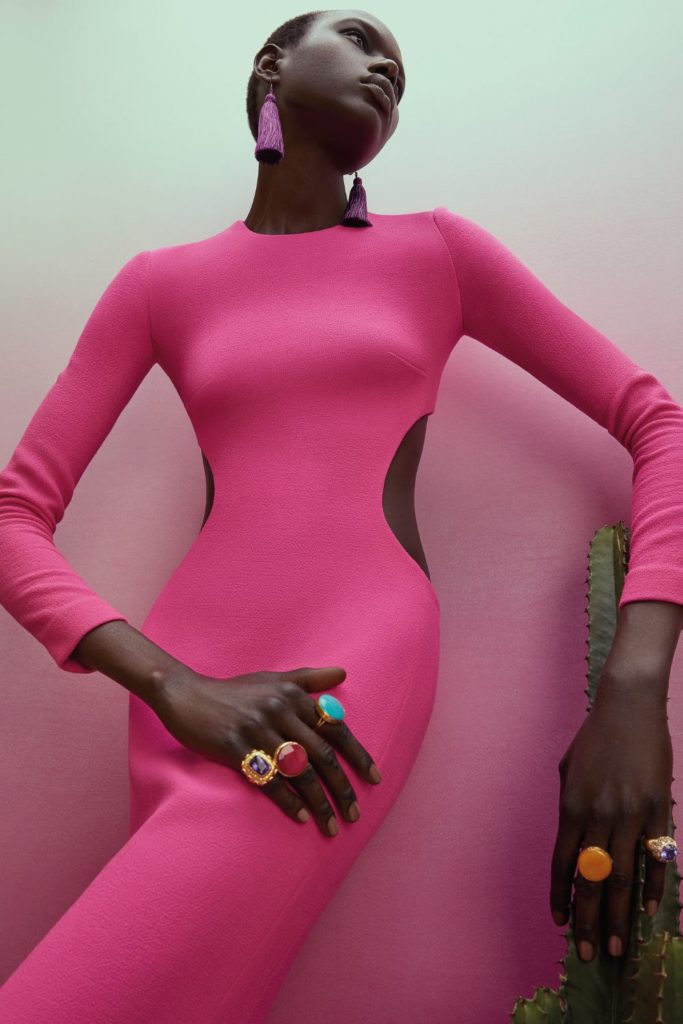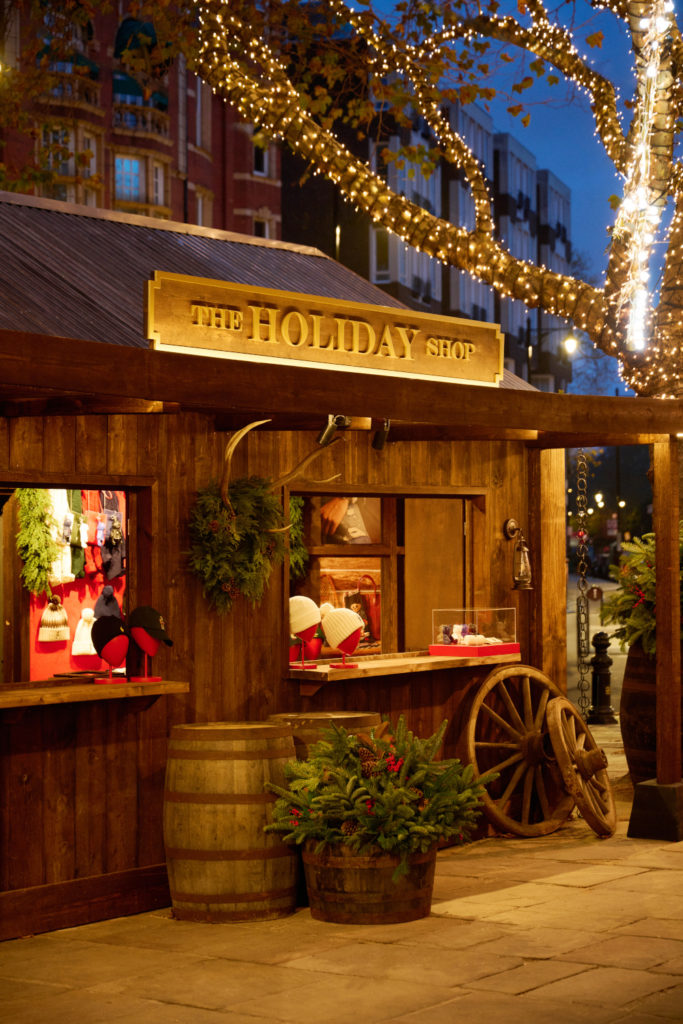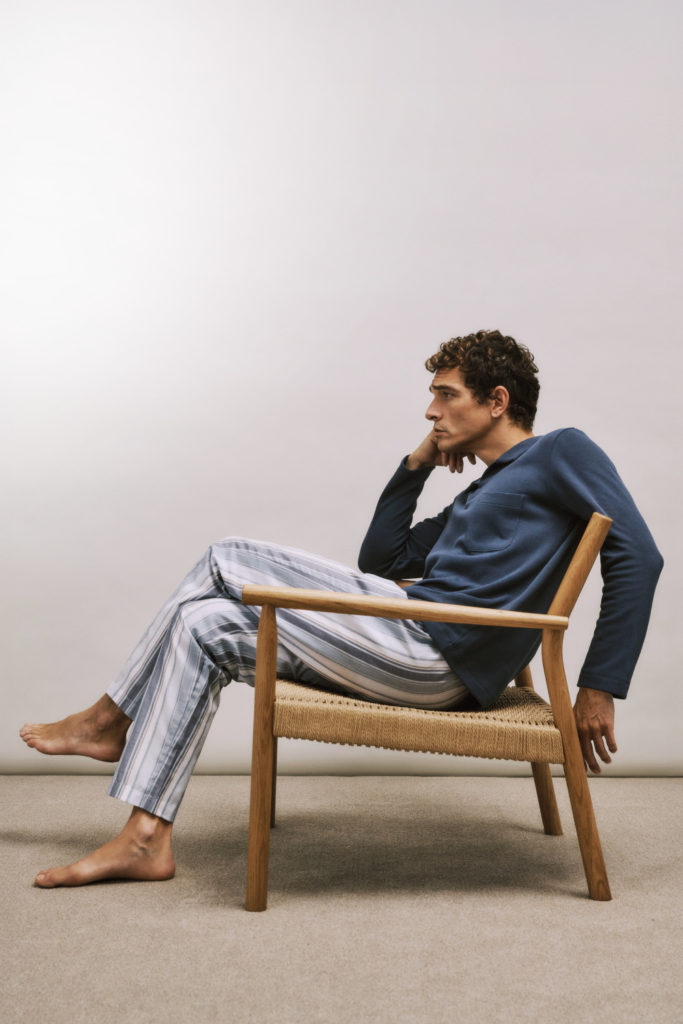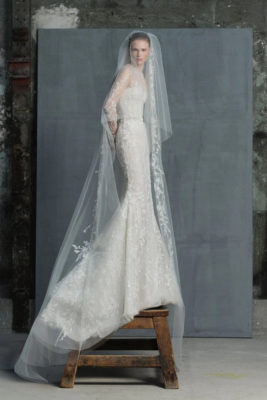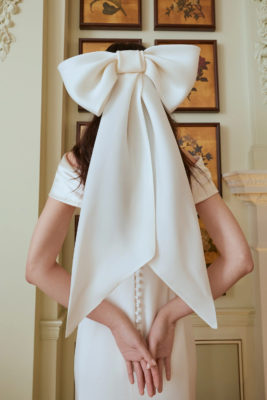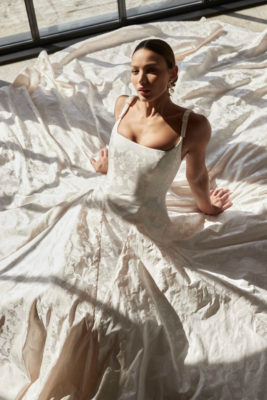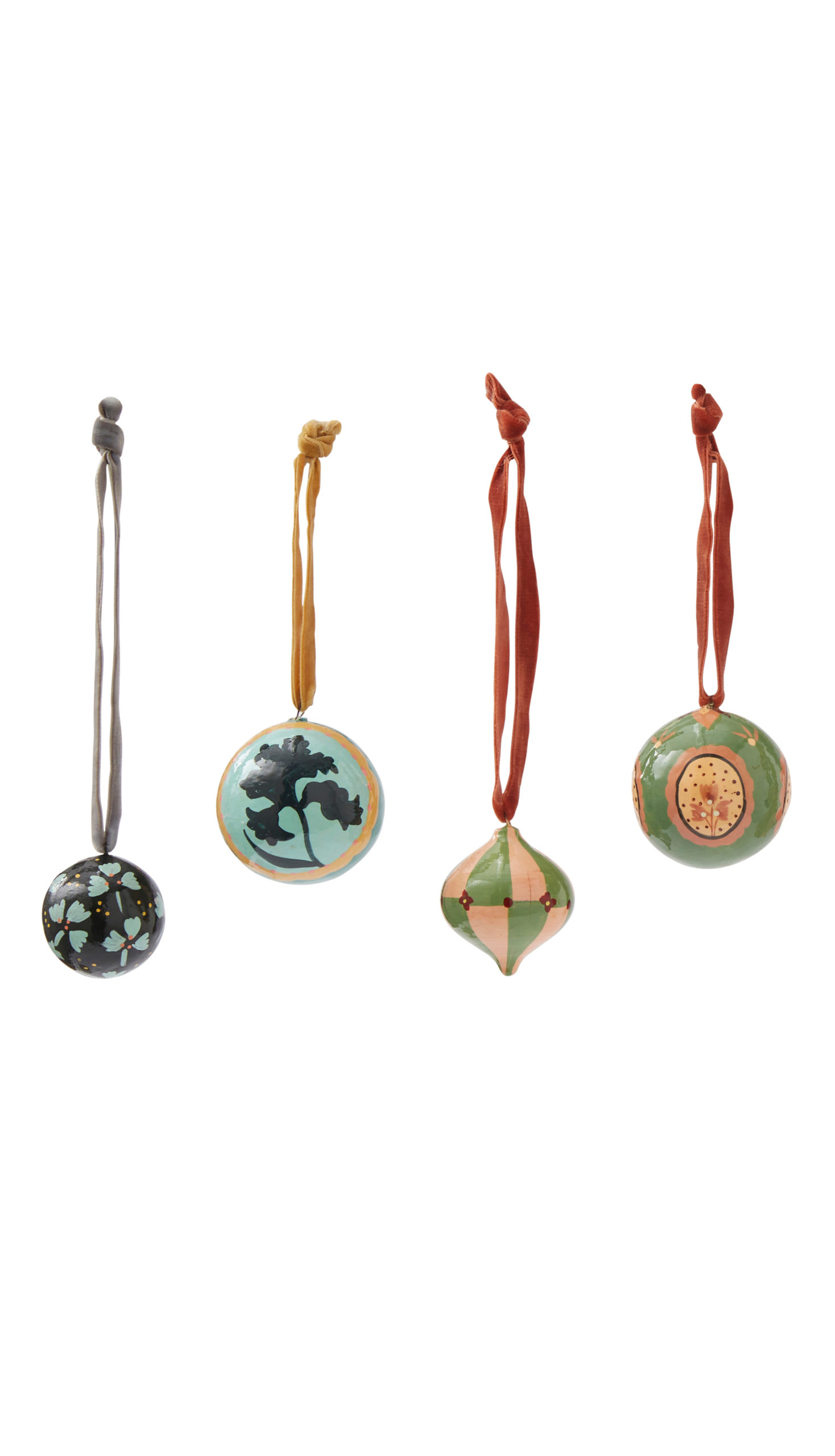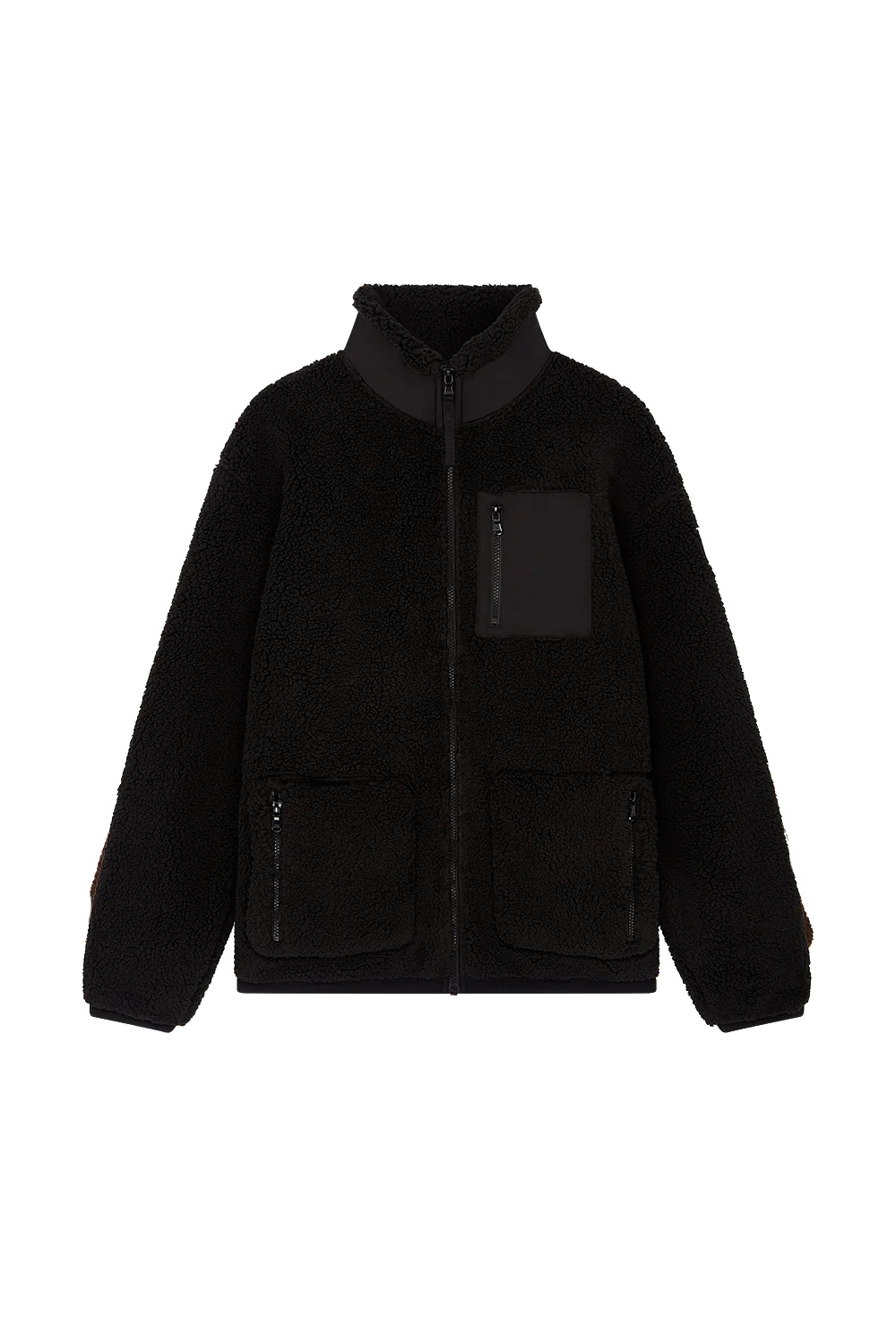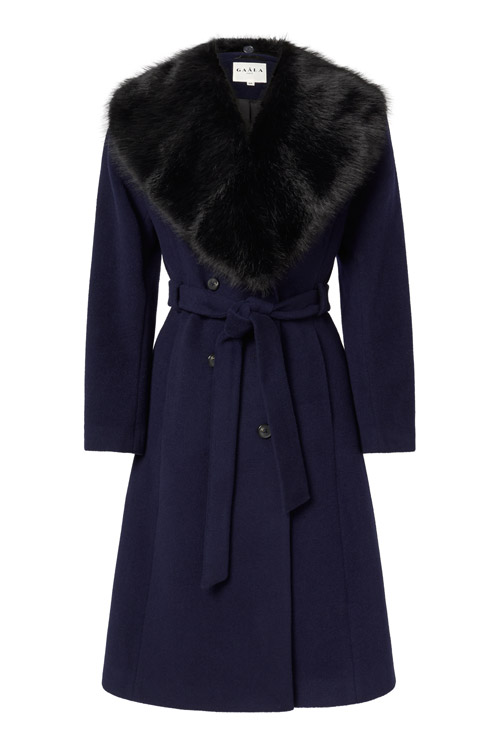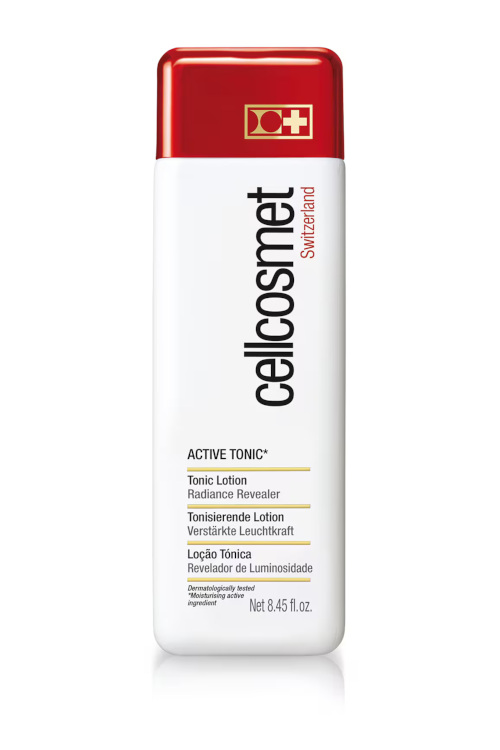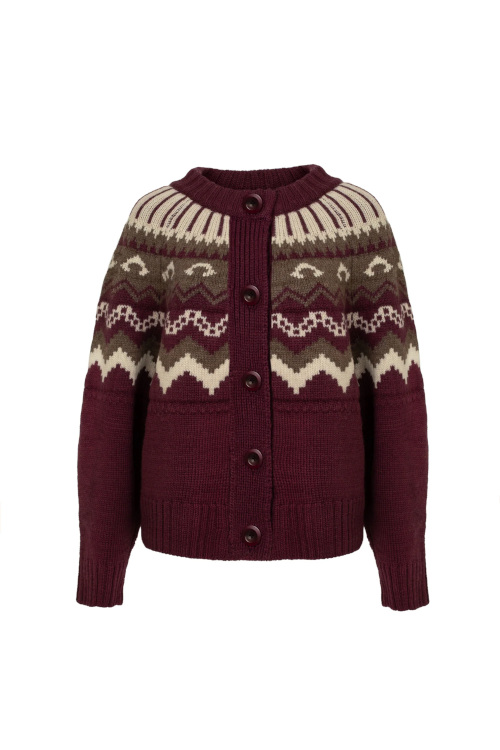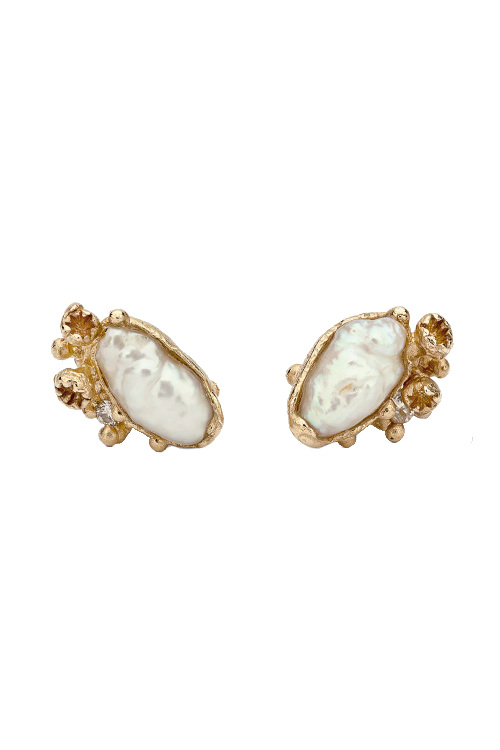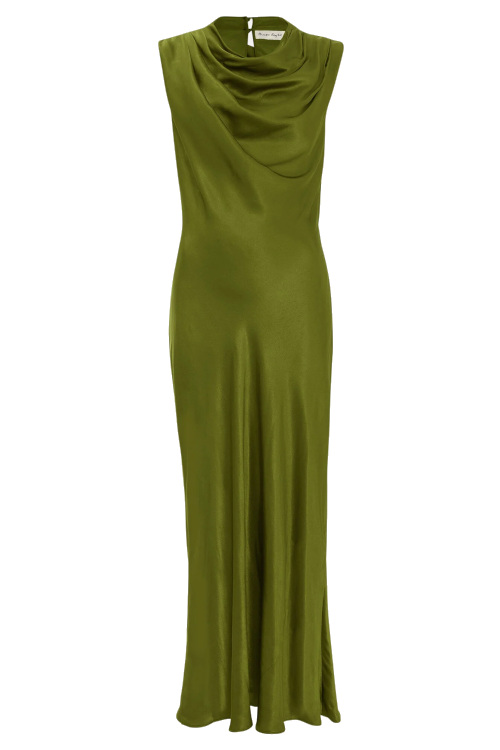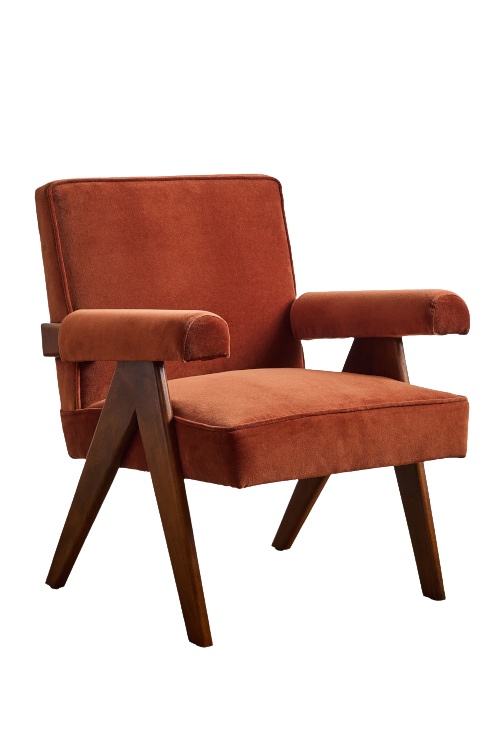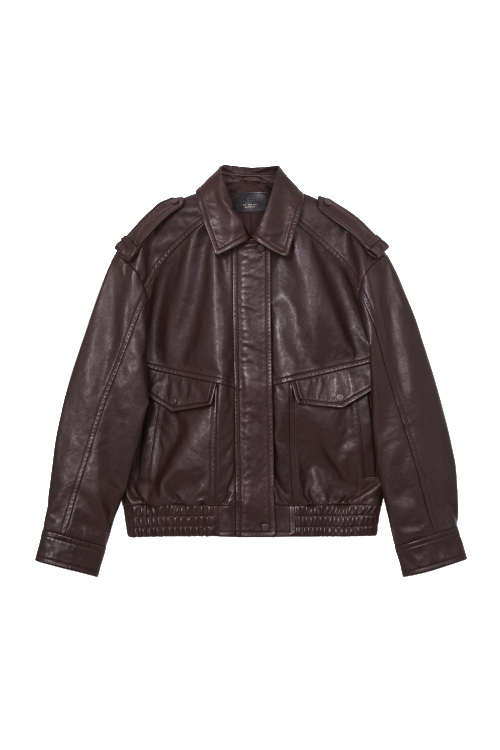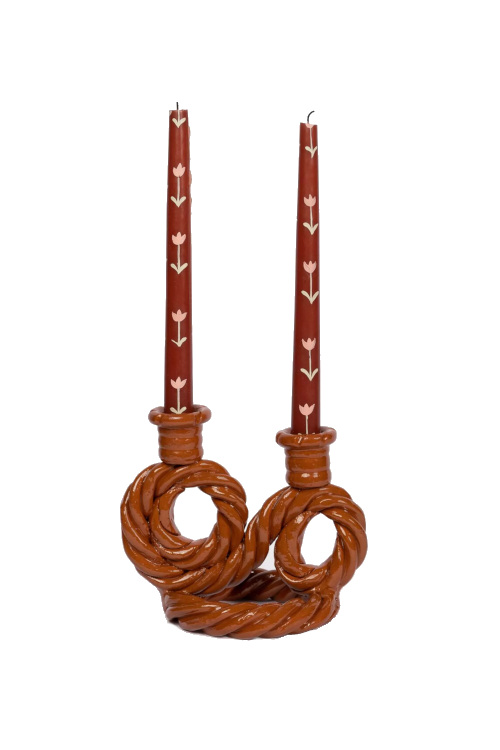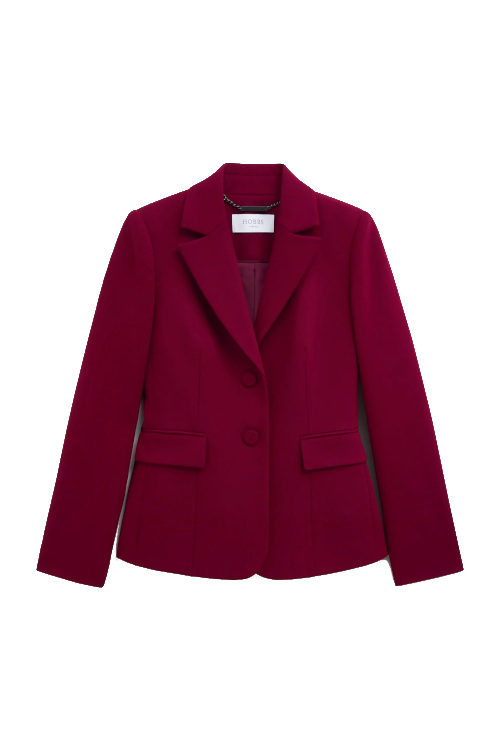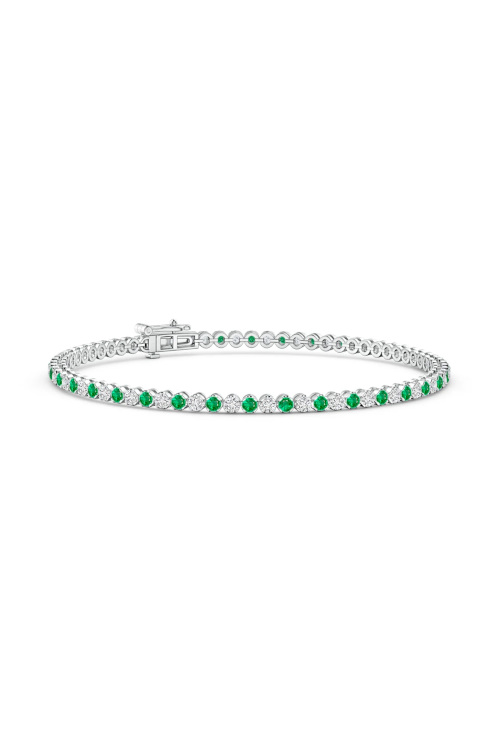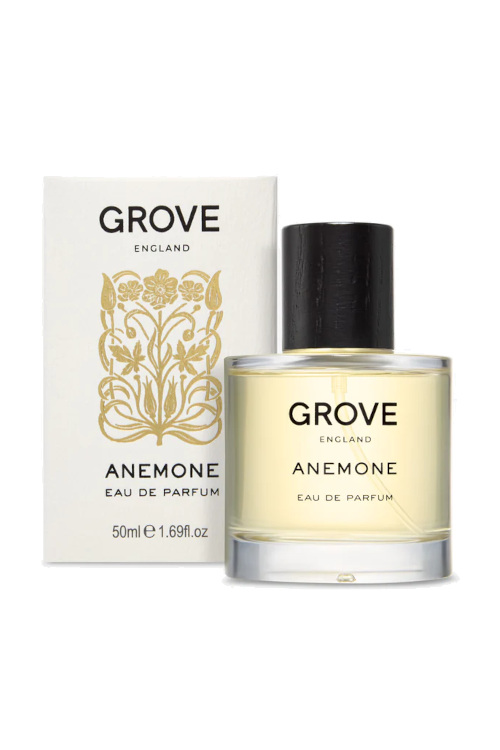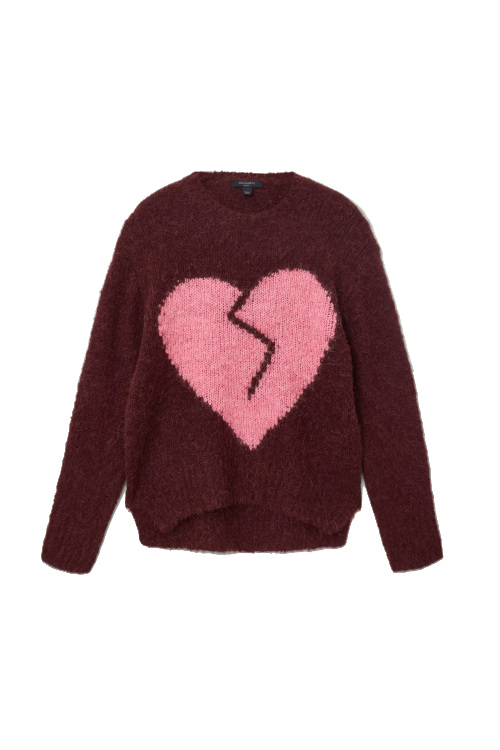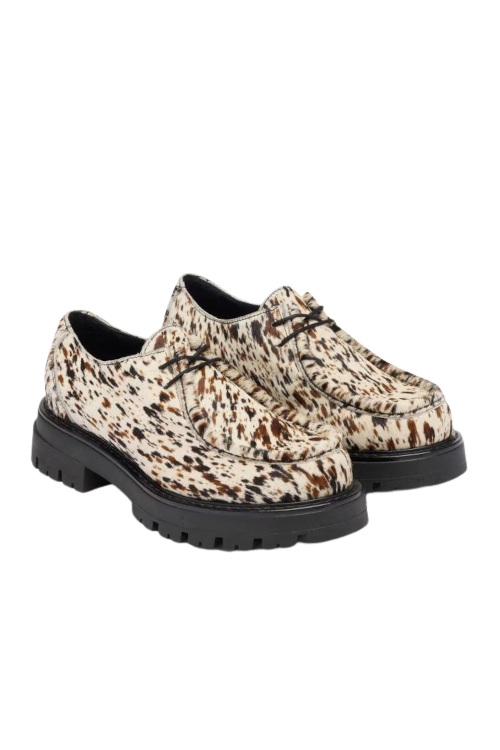
How To Choose A Wedding Veil By Length
By
3 months ago
Whether short and sweet or long and dramatic, there's a wedding veil to suit every bride's taste
The finishing touch for any bridal moment? A chic wedding veil. Whatever the length – a playful blusher, a classic waltz or a dramatic cathedral – a wedding veil simply does not go out of fashion. ‘They are a timeless symbol of elegance and tradition,’ confirms couture bridal and eveningwear designer Phillipa Lepley. ‘A veil adds a romantic and ethereal touch to a bridal look, creating a sense of romantic mystery and anticipation. Despite evolving trends, veils always remain popular because they effortlessly enhance the overall aesthetic, beautifully framing the face and mirroring the triangular silhouette of the skirt.’
But actually finding the right veil is often easier said than done. Ideally, you’ll only ever shop for a veil once – there aren’t many other events in your day-to-day life that call for them, after all – so it’s normal to not have much experience hunting one down. But just like your wedding dress, the veil is designed to echo your personal style, and unlock the door to that all-important ‘bridal moment’. As Phillipa explains, ‘It’s the final touch that elevates the entrance to the ceremony, and something you can personalise to make uniquely yours.’
So, where to start? According to the British wedding dress and veil designer, it all begins with finding the ideal length.

(c) Yuval Hen, courtesy of Phillipa Lepley
Wedding Veil Styles By Length
While the bride can choose any wedding veil length they desire, there are a few common styles they can use as a starting point. ‘Veils can be short and playful, dramatic and floor-sweeping or extend meters beyond your gown for a grand statement. There are no strict rules,’ adds Phillipa. ‘Choosing the right veil length is all about proportion, balance and harmony; it should enhance your gown without overpowering it. The key is that you remain the focus.’
We’ve highlighted some popular wedding veil lengths and styles below.
Birdcage Veil (4–9″)
Let’s start with the shortest: the birdcage veil. Sometimes known as the bandeau veil, this flirty, vintage-style design is usually made of net or lace. Lengths slightly vary, with some covering just the eyes and others extending over the nose and jaw as well.
View this post on Instagram
Shoulder-Length Veil (20–22″)
Another short veil, this one hits just at the shoulders – leaving the rest of the dress open and visible. An ideal choice for laidback, minimalist brides, or those who simply want their dress to stay the star of the show.
View this post on Instagram
Flyaway Veil (20″)
This retro-themed veil similarly offers a short and sweet look for brides, with a hem that barely kisses the shoulder blades. If your dress has an open or statement back, this could be the veil for you.
View this post on Instagram
Hooded Veil (20″ or more)
Full of whimsy and storybook romance, this style brings together elements of a classic veil and functional cape. The defining feature, though, is the hood, which is typically crafted from tulle, lace or organza. Lily Collins famously wore a hooded cape on her big day, although she combined this with a floor-skimming length for dramatic effect.
View this post on Instagram
Blusher (30″)
‘You might also opt for a blusher, also known as a wedge veil,’ suggests Phillipa. ‘It’s a short layer worn over the face, finishing just above where your hands will hold the bouquet near the top of your dress. You can choose to wear it over your face, or simply keep at the back for more framing and volume.’
View this post on Instagram
Elbow Veil (32″)
Moving further down, this style of veil falls to the bride’s elbows – offering slightly more coverage around the shoulders and arms. The shorter length is perfect for showing off a dramatic train, or even for a laidback courthouse wedding.
View this post on Instagram
Fingertip Veil (38–40″)
As its name suggests, this style of veil has a hem that falls to the end of your fingertips. It’s also one of the most popular wedding veil lengths since it offers the drama of a longer veil alongside the convenience of a medium-length hem.
View this post on Instagram
Knee-Length Veil (48″)
These veils are designed to fall down to the knee, and like the above give the impression of a longer veil while allowing the bride to move more freely. A slightly longer rendition, known as a three-quarter length veil, usually falls between the back of the knee and the ankle. ‘It finishes mid-dress for a balanced effect,’ notes Phillipa.
View this post on Instagram
Waltz Veil (60″)
Brides don’t need to take off their veil after the ceremony if they don’t want to – but if they plan to keep them on while dancing, it’s best not to get anything longer than a waltz (or ballet) veil. This length falls somewhere around the mid-calf, so you won’t run the risk of stomping on your veil while enjoying your first dance as newlyweds.
View this post on Instagram
Floor-Length Veil (70–72″)
The first of the longer veils, a floor-length style just grazes the ground. It should match the length of the bride’s gown, with the fabric adding extra volume to the overall silhouette of the wedding outfit.
View this post on Instagram
Chapel Veil (90″)
Extending fully to the floor, a full-length chapel veil is one of the more dramatic styles brides can choose from. ‘This veil is generally a foot longer than the gown, creating an elegant and elongated line,’ adds Phillipa. You can also use it to create the illusion of a train, without the worry of having to bustle your gown later in the evening.
View this post on Instagram
Cathedral Veil (108–120″)
‘An extra-long cathedral veil sweeps far beyond the dress for maximum drama,’ says Phillipa. Trailing about two feet behind the bride, this is the style to go for if you want to make a cinematic ceremony entrance.
View this post on Instagram
Royal Veil (120″ or more)
Anything longer than the above and you’ll resemble the great sweeping veils worn at royal weddings. There isn’t a limit (or ornamentation) on the length of a royal veil, but keep in mind that you’ll likely need your bridal party close at hand to help you navigate the aisle without catching the fabric.
View this post on Instagram
What To Consider When Shopping For A Veil
Have a budget in mind
Just like your wedding dress, you’ll need to have a specific price in mind when it comes to the veil – as these can quickly rocket in cost when you’re not paying attention. ‘Veils can vary in price based on the complexity of each unique, bespoke design,’ notes Phillipa. ‘Beautiful samples are often available too.’
Factor in your hairstyle
‘Think about your hair, jewellery or any headpieces you want to wear early on in the process,’ recommends Phillipa. ‘If you’re wearing your hair down, for example, I always suggest pinning a small section back so the comb has something to grip to and your face is visible for your entrance.’
Look at the fabric quality
While not always at the top of the list, it’s important to think about what kind of fabric you’d like to wear on your wedding day. ‘Consider the quality of the fabric,’ emphasises Phillipa. ‘Our veils are crafted from pure silk tulle, woven on 200-year-old looms in France – the softness and transparency are just unmatched.’
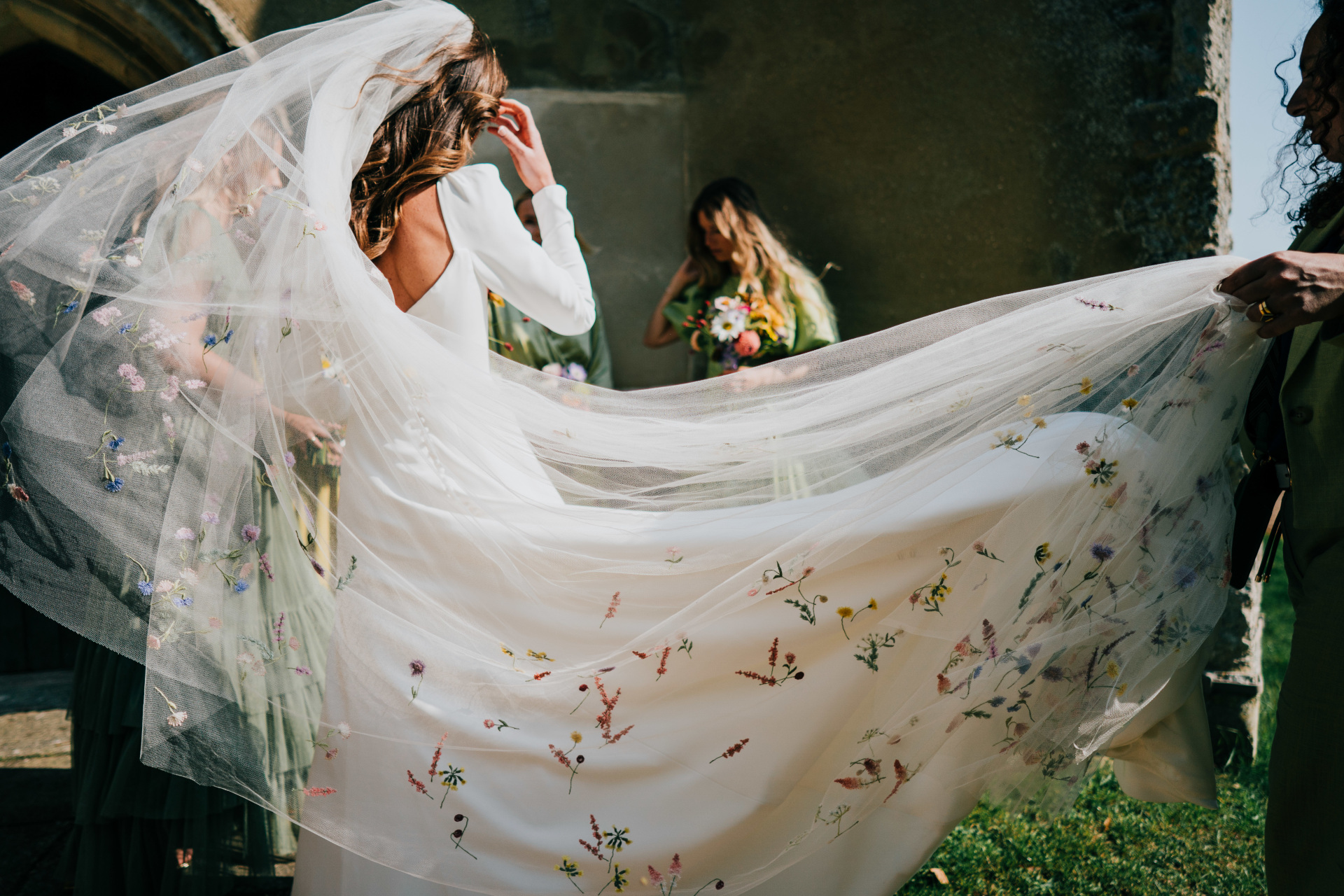
(c) Alan Law, courtesy of Phillipa Lepley
Dress shopping and fittings
Phillipa also suggests trying on as many veils as you feel comfortable while dress shopping. ‘Trying on veils gives you an invaluable perspective. The moment the veil goes on, you truly begin to feel like a bride. I encourage brides to try on several styles and lengths to see what resonates, keeping an open mind and letting the creative process unfold naturally – it’s such a special part of the journey.’
Think about how it will look with the dress
Finding the right veil for your dress is a task in and of itself. To get started, think about the details of your gown and how you can highlight them. (After all, you’ll want your guests to be able to actually see your dress.) ‘The neckline and embellishments on a wedding dress can also influence the veil choice, ensuring everything harmonises beautifully,’ adds Phillipa.
Be experimental
That being said: while a cohesive look is what most brides go for, don’t be afraid to experiment. ‘Don’t feel you have to “match” the dress exactly – contrast can be beautiful,’ confirms Phillipa. ‘Often a clean, minimalist dress looks wonderful with a embroidered veil for drama, other times an intricate dress needs the softness of plain silk tulle so you can see every detail.’
Personalisation
There’s also opportunity to make the veil a special memento from your big day. ‘Personalise your veil with embroidery, embellishments,or custom details like initials, wedding date or a family crest to make it uniquely yours,’ suggests Phillipa. (For celebrity inspiration, look to Hailey Bieber, who had her custom Virgil Abloh wedding veil embroidered with the words ‘TIL DEATH DO US PART’.)
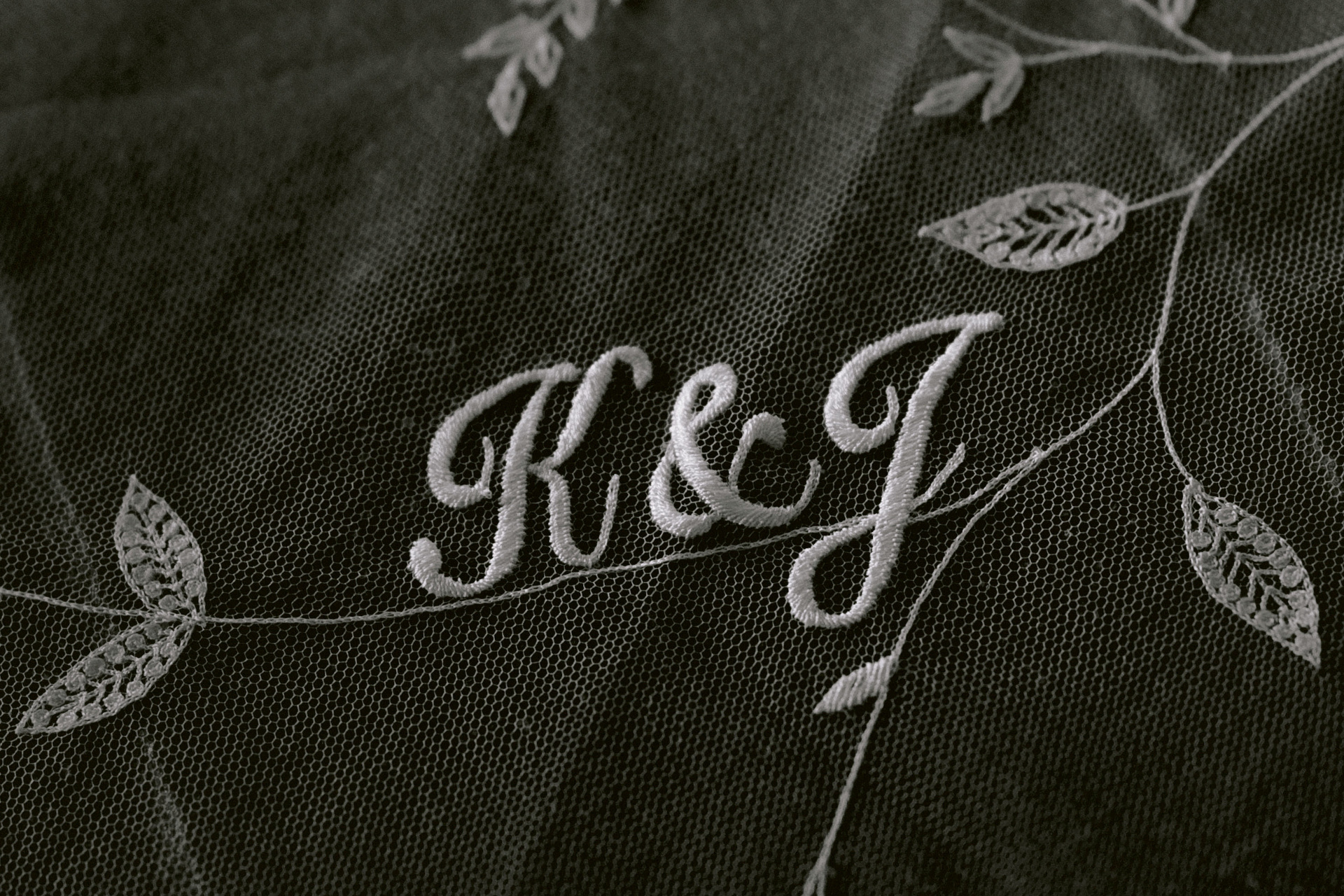
(c) Facibeni Weddings, Phillipa Lepley
Do You Have To Wear A Veil On Your Wedding Day?
Not if you don’t want to. While some brides thrive under this wedding tradition, others aren’t so keen. ‘Remember: wearing a veil is a tradition, not a requirement,’ emphasises Phillipa. ‘However, I often say this will be the only time in your life you wear one, and it is such a special experience.’
But if you really are dead set on not wearing a veil, there are plenty of other options when it comes to bridal accessories. ‘If you prefer something else, you might choose a family heirloom headpiece, a cape or even a stole in silk tulle, which gives the same softness and romance,’ suggests the designer. ‘Whatever you choose, it should feel authentically you and make your entrance unforgettable.’
Where To Shop
Feeling inspired? Check out our edit of the best bridal veils (and the designers behind them).

